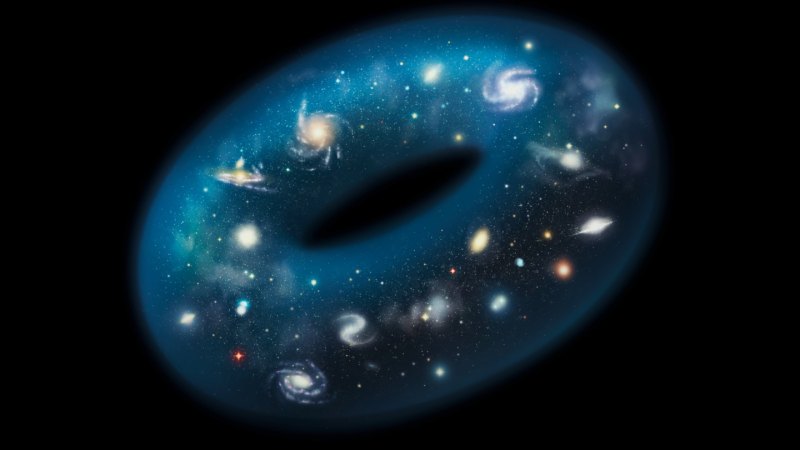
Extreme Climate Survey
Scientific news is collecting questions from readers about how to navigate our planet’s changing climate.
What do you want to know about extreme heat and how it can lead to extreme weather events?
It is generally believed that the universe has trivial topology. But this is not known for sure, the researchers argue.
“I find it fascinating … the possibility that the universe can have non-trivial or different topologies, and then especially the fact that we think we can measure it,” says cosmologist Dragan Huterer of the University of Michigan in Ann Arbor. who was not involved in the study.
A universe with non-trivial topology can be a bit like Pac-Man. In the classic arcade game, moving all the way to the right edge of the screen flips the character to the left side. A Pac-Man ride that crosses the screen and returns the character to his starting point also cannot be scaled down.
Scientists have already looked for signs of complex topology in the cosmic microwave background, light from when the universe was only 380,000 years old. Because of the way space loops back on itself in a universe with trivial topology, scientists may be able to observe the same feature in more than one place. Researchers have looked for identical rings appearing in that light in two different places in the sky. They also looked for subtle correlations, or similarities, between different points, rather than identical matches.
These searches found no evidence for complex topologies. But, theoretical physicist Glenn Starkman and colleagues argue, there’s still a chance the universe has something in common with a doughnut. This is because previous research considered only a small subset of the possible topologies the universe could have.
This subset includes a non-trivial type of topology called the 3-torus, a cube that turns on itself like a 3-D version of the Pac-Man screen. In such a topology, exiting any side of that cube takes you back to the opposite side. Searches for that simple 3-torus have returned empty. But scientists have not yet searched for some 3-torus variations. For example, the sides of the cube may be twisted relative to each other. In such a universe, exiting the top of the cube would return you to the bottom, but rotated, say, 180 degrees.
The new study looked at a total of 17 possible non-trivial topologies for the cosmos. Most of these topologies, the authors determined, have not yet been ruled out. The study evaluated the signatures that would appear in the cosmic microwave background for different types of topologies. Future analyzes of that ancient light may reveal hints of these complex topologies, the researchers found.
The search is likely to be computationally challenging, possibly requiring machine learning techniques to speed up calculations. The researchers also plan to look for signs of trivial topology in future data from surveys of the distribution of galaxies in the cosmos, for example from the European Space Agency’s Euclid Space Telescope (SN: 20/12/23).
There’s good motivation to look for non-trivial topologies, says Starkman, of Case Western Reserve University in Cleveland. Several features of the cosmic microwave background suggest that the universe is not the same in all directions (SN: 23.12.08). This kind of asymmetry can be explained by non-trivial topology. And this asymmetry, Starkman says, is “one of the biggest new mysteries about the universe that hasn’t gone away.”
#universe #complex #geometry #doughnut
Image Source : www.sciencenews.org